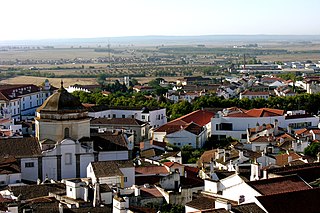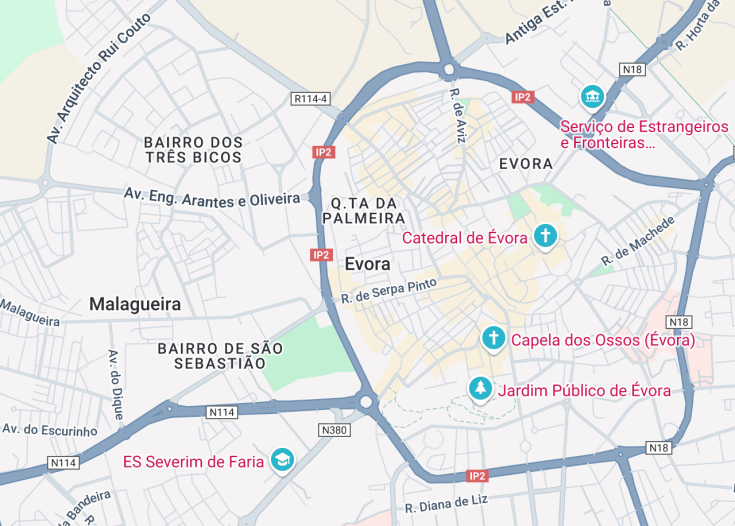Évora, a UNESCO World Heritage site nestled in the heart of Portugal’s Alentejo region, embodies a breathtaking tapestry of history, culture, and architecture. Renowned for its well-preserved Old Town, the city offers an array of awe-inspiring landmarks, including the Roman Temple of Évora and the haunting Chapel of Bones.
This charming city not only captivates with its rich historical narrative but also delights visitors with its vibrant local cuisine and tranquil, picturesque streets that echo tales of yesteryears under the warm Iberian sun.
Explore Évora early in the morning to experience the city’s historic sites in the soft, golden light of sunrise, enhancing the magical ambiance without the crowds.
Consider visiting in the spring or fall when the weather is mild and the tourist crowds are thinner, making it ideal for leisurely exploration of Évora’s storied streets.
Top things to do & see in Evora
Select the following sights and activities to discover best tickets and tours available in Evora.
Evora: A Glimpse into Portugal’s Past
| Country | Portugal |
| Time in Evora | GMT+0 |
| Language spoken | Portuguese |
| Population | 56,596 (Source: Latest Census) |
| Currency | Euro (€, EUR) |
| Airports |
|
Known for its rich history and stunning architecture, Evora is a UNESCO World Heritage city nestled in the heart of Portugal. The city’s history dates back more than two millennia, during which it has been occupied by Romans and Moors and served as a residence for Portuguese kings. The ancient city walls, Roman Temple, and the eerie Chapel of Bones are key highlights, making Evora one of Portugal’s most fascinating and visited cities.
Where is Evora?
Located in southern Portugal, Evora is strategically situated in the Alentejo region, known for its vast plains and cork oak forests.
Distances:
| Route | Distance by car | Time by car |
|---|---|---|
| Lisbon to Evora | 87 miles (140 km) | 1 hour 30 minutes |
| Porto to Evora | 286 miles (460 km) | 4 hours 30 minutes |
What is Evora famous for?
Evora is famous for its well-preserved old town center, which houses numerous historic monuments, including the Gothic-style Cathedral and the Roman Temple of Évora. Additionally, its unique blend of cultures over the centuries adds to its rich cultural tapestry.
History
Prehistoric Period – Before 2nd Century BC
Evora’s intrigue begins in the echo of prehistory, where early evidence indicates a presence of proto-historic settlements. Megaliths dotting the region, such as the Almendres Cromlech, the largest existing group of structured menhirs in Iberia, support the area’s occupancy several millennia ago. These stone structures, tied deeply with astronomical and religious significance, mark Évora as a site of ancient human engagement.
Roman Rule – 1st Century BC to 5th Century AD
Evora’s legacy as a city truly began under Roman occupation. Known as Ebora Liberalitas Julia, the city was pivotal in Roman administration in Lusitania province. Archaeological remnants, including the celebrated Roman Temple of Évora, baths, and parts of the wall encircling the old town, chronicle the city’s prominence during ancient times. This era endowed Évora with urban architectural frameworks and cultural landscapes whose impacts percolate to this day.
Moorish and Reconquista Period – 8th Century to 12th Century
The Moors left an indelible mark on the city after conquering it in the 8th century. It became a Moorish cultural and administrative center until the Reconquista by Giraldo the Fearless in 1165. The Moorish influence survives in Évora’s whitewashed houses and winding lanes, unveiling the city’s continued narrative of cultural synthesis and adaptation.
Golden Age – 15th to 16th Century
The Renaissance was a golden age for Évora, turning it into a hub of humanism and creativity under the auspices of the Portuguese kings. The University of Évora, founded in 1559 by the Jesuits, is a testament to the city’s intellectual vivacity during this period. This era also witnessed the construction of numerous convents and royal buildings that define much of its current architectural visage.
Modern Era – 20th Century to Present
Transitioning through a quieter phase in its later history, Évora faced challenges typical of evolving historical cities trying to find their space in a modernizing world. The 20th century fostered preservation efforts, leading to its classification as a UNESCO World Heritage site in 1986. Today, Évora is celebrated not only for its rich historical tapestry but also for its roles in education and regional tourism in Portugal.
Visit Evora
What to see and do in Evora, Portugal
Évora, a city rich with history, offers a wealth of intriguing sites and activities. The Roman Temple, Cathedral of Évora, and St. Francis Church with the eerie Chapel of Bones are must-visit landmarks. Embrace the culture by wandering through the narrow streets of the historical center, exploring the diverse local markets, and admiring the unique blend of Gothic, Roman, and Baroque architecture. For a touch of nature, the public gardens provide a serene retreat.
- Visit the Roman Temple and Évora Museum.
- Explore the Cathedral of Évora.
- See the Chapel of Bones at St. Francis Church.
- Stroll through the historical city center.
- Relax in Jardim Publico (Public Garden).
Annual festivals in Evora
Évora hosts several captivating events annually. The highlight is the Festa da Exaltação da Santa Cruz in September, celebrating the city’s culture with music, art, and traditional cuisine.
Similarly, the Evora Classical Music Festival in July attracts music enthusiasts with performances set against the backdrop of historic venues.
Best time to visit Evora
The optimal time for visiting Évora is during the spring (April to June) or early autumn (September to October). These months offer pleasant weather, fewer crowds, and the full bloom of local festivals and agricultural markets.
Is Evora worth visiting?
Indeed, Évora is unquestionably worth visiting. This hidden gem of Portugal encapsulates an entire spectrum of history, culture, and architecture that appeals to any curious traveler.
From its ancient Roman roots to Moorish architectural influences and vibrant cultural festivals, Évora offers a discovery at every corner, making it a must-visit destination in the heart of the Alentejo region.










